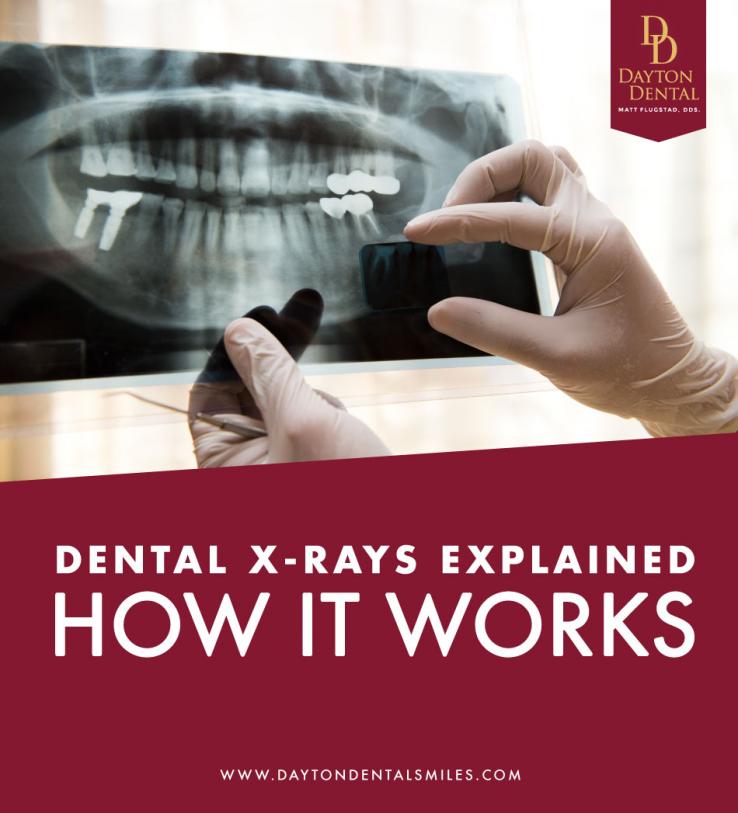Dental X-Rays Explained: How It Works

We all have unique oral care needs. So how often you need dental X-rays depends on your particular oral health. But if you’re prone to tooth decay, your dentist may recommend dental X-rays annually to identify weak spots and treat them before the decay progresses.
There are several other situations that might require dental X-rays. If you switch to a new dentist, the new dentist may want to take X-rays to help him or her become more familiar with your teeth and any problems that you have. A new dentist might also ask your previous dentist to send any old X-rays in order to have a complete history of your dental care.
Children and teens may need X-rays more often than adults because their teeth and jaws aren’t yet fully developed. Also, your dentist will take X-rays before a procedure such as a root canal or tooth extraction.
Here’s how dental X-rays work: When the X-rays pass through the mouth, the teeth and bones absorb more of the ray than the gums and soft tissues, so the teeth appear lighter on the final X-ray image (called a radiograph). Areas of tooth decay and infection look darker because they don’t absorb as much of the X-ray. Dentists can use the information from an X-ray to identify infections, abscesses and even small cysts and tumors. They also can identify developmental abnormalities, such as impacted wisdom teeth.
The appearance of fillings and crowns on an X-ray depends on what they are made of. Some appear dark and some appear light. No matter what type of dental restoration or implant you have, your dentist can use X-rays to help identify any areas that need attention or adjustment.

